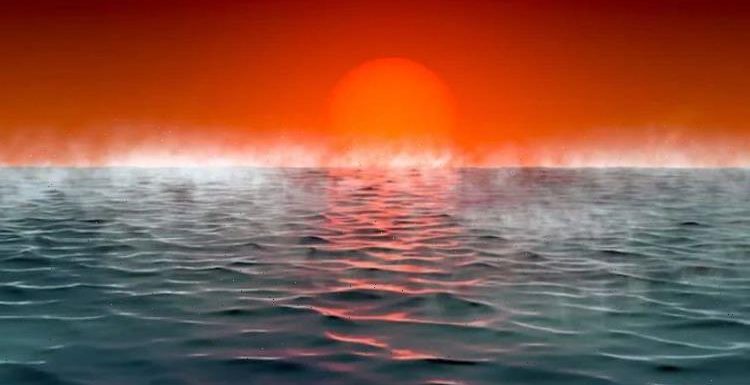
K2-18b: Scientist reveals exoplanet could harbour water
We use your sign-up to provide content in ways you’ve consented to and to improve our understanding of you. This may include adverts from us and 3rd parties based on our understanding. You can unsubscribe at any time. More info
The planets, known as Hyceans, are hot, covered in water and are up to 2.5 times bigger than Earth. Experts have said these “waterworlds” are abundant throughout the Milky Way and could be capable of sustaining life.
They may also host microbial life similar to the “extremophiles” that thrive in some of Earth’s harshest environments.
Astronomers from the University of Cambridge, who lead the study published in the Astrophysical Journal, have suggested that alien lifeforms could even be discovered within three years.
Lead author Nikku Madhusudhan, of the Institute of Astronomy at the University of Cambridge in England, said: “Hycean planets open a whole new avenue in our search for life elsewhere.”
“Essentially, when we’ve been looking for these various molecular signatures, we have been focusing on planets similar to Earth, which is a reasonable place to start.


“But we think Hycean planets offer a better chance of finding several trace biosignatures.
“A biosignature detection would transform our understanding of life in the universe.”
The experts identified a number of Hycean worlds whose atmospheres could be scrutinized by next-generation observatories such as NASA’s $9.8billion (£7.13billion) James Webb Space Telescope, which is scheduled to launch later this year.
Those potential targets orbit small, dim red dwarf stars between 35 and 150 light-years from Earth.

Study co-author Anjali Piette, said: “It’s exciting that habitable conditions could exist on planets so different from Earth.”
Hycean worlds are similar in size to rocky “super-Earths” and gassy “mini-Neptunes,” two of the most common types of exoplanet in the galaxy.
But the Hyceans are distinct, with densities between those of super-Earths and mini-Neptunes.
DONT MISS
Antarctica find could show how life develops on other planets [STUDY]
Aliens from more than 1,700 stars may have already spotted us [REVEAL]
Astronomers detect remains of vaporised ancient Earth-like planets [REACTION]

The planets also allow for a far wider habitable zone compared to Earth-like planets.
This means that they could still support life even though they lie outside the range where a planet similar to Earth would need to be in order to be habitable.
Experts will continue to probe these planets in the hope of learning more.
Source: Read Full Article